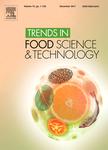版权所有:内蒙古大学图书馆 技术提供:维普资讯• 智图
内蒙古自治区呼和浩特市赛罕区大学西街235号 邮编: 010021

作者机构:Anhui Agr Univ Sch Tea & Food Sci Technol State Key Lab Tea Plant Biol & Utilizat Hefei 230036 Peoples R China Anhui Agr Univ Sch Life Sci Hefei 230036 Peoples R China Agr & Agrifood Canada Guelph Res & Dev Ctr Guelph ON N1G 5C9 Canada
出 版 物:《TRENDS IN FOOD SCIENCE & TECHNOLOGY》 (食品科学与技术趋势)
年 卷 期:2022年第127卷第0期
页 面:207-220页
核心收录:
学科分类:0832[工学-食品科学与工程(可授工学、农学学位)] 08[工学]
基 金:Anhui Natural Science Foundation [2008085MC82] Anhui Provincial Key Research and Development Plan [202004h07020007] National Natural Science Foundation of China
主 题:Tea Mycotoxins Fungi Detection methods LC-MS Risk assessment Diet exposure
摘 要:Background: Tea is welcomed by consumers worldwide for its unique flavor and multiple health-promoting components. However, there is still being challenge of tea regarding microbial contaminations during cultivating, processing, storage and transportation, and the risks of potential intake of mycotoxins from tea drinking. Scope and approach: Based on available publications, this review summarized the results, discussed the conclusions and provided prospects on the topic of fungal and mycotoxin contaminations in the commonly recognized six tea categories, i.e. green tea, white tea, yellow tea, oolong tea, black tea and dark tea. For the results of contaminations and risks differ significantly in different studies, the advantages and disadvantages of such detection techniques and risk assessment method were thoroughly compared and *** findings and conclusions: The fungal floras vary greatly among the different teas, and are the most abundance and complex in dark teas. Certain fungal species being reported as toxigenic fungi were isolated from teas but their capability to produce mycotoxins on teas needs to be confirmed. The mycotoxins detected from teas include aflatoxins, ochratoxin A, fumonisins, deoxynivalenol, zearalenone and enniatins, but their occurrence and prevalence differ significantly in various tea categories and in different studies, especially being determined by different analytical methods. Dietary risks of mycotoxins from teas were low, but the sample sizes of teas and consumption data are very limited, and the cumulative risks should be assessed further using more appropriate methods based on large numbers of tea contamination data and dietary surveys.